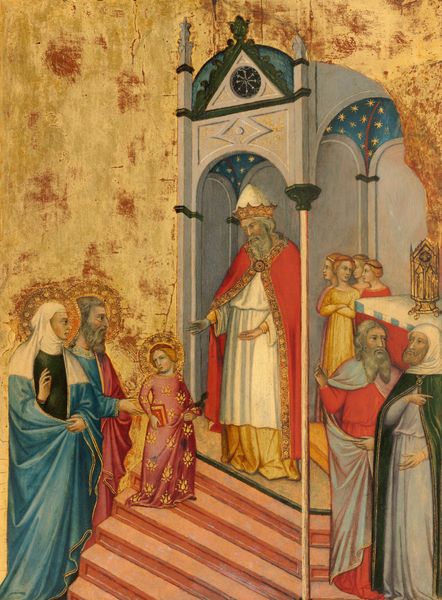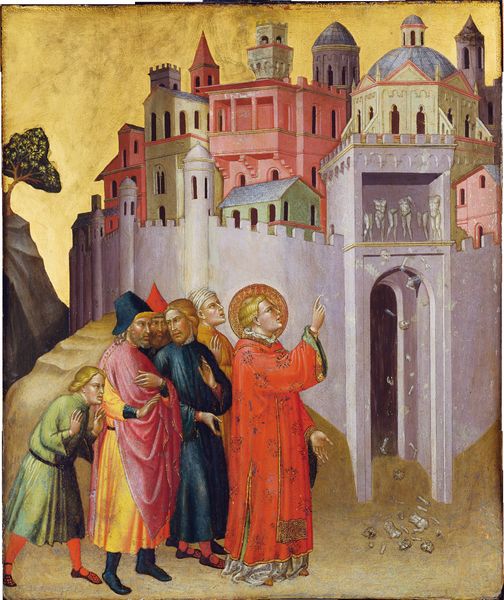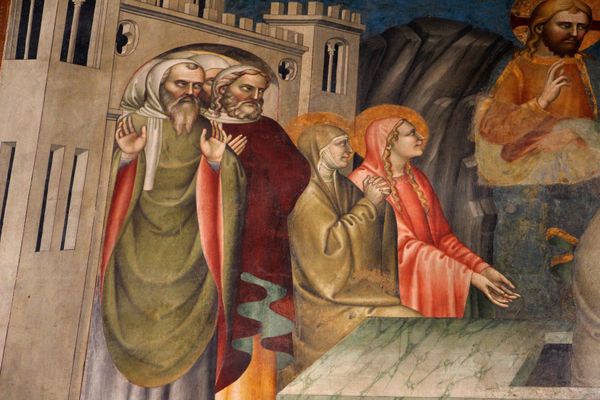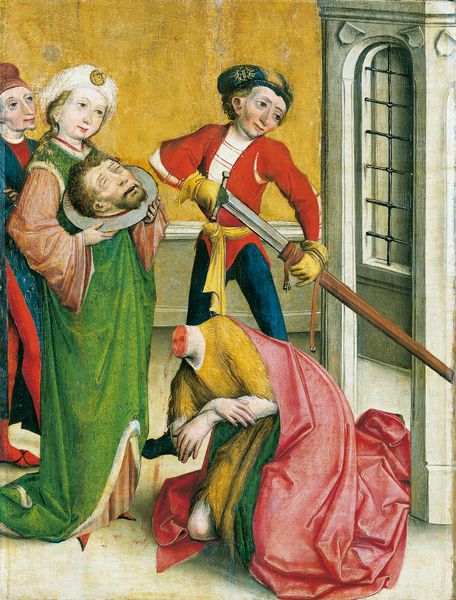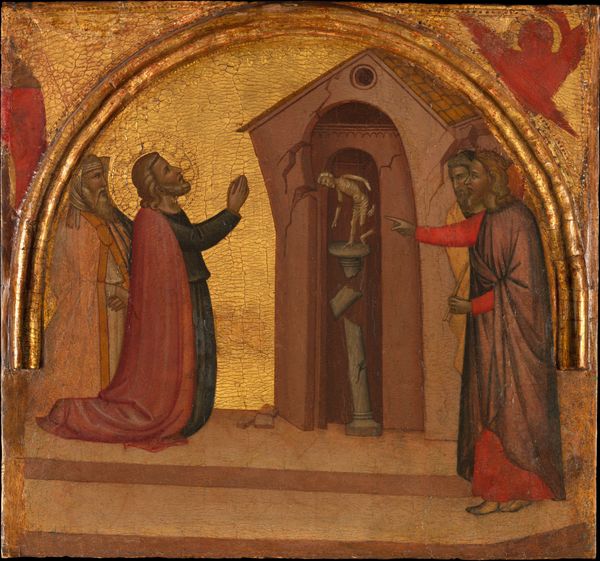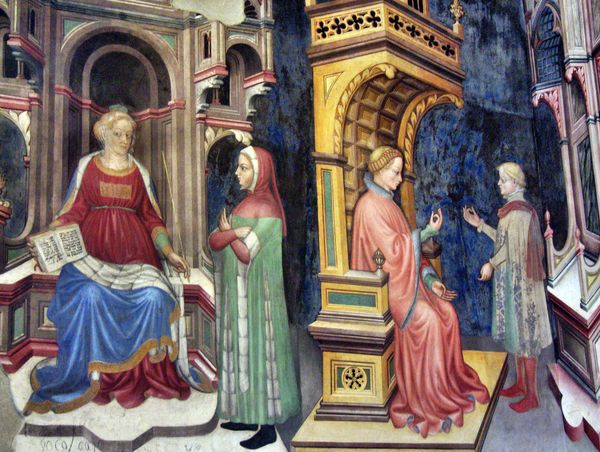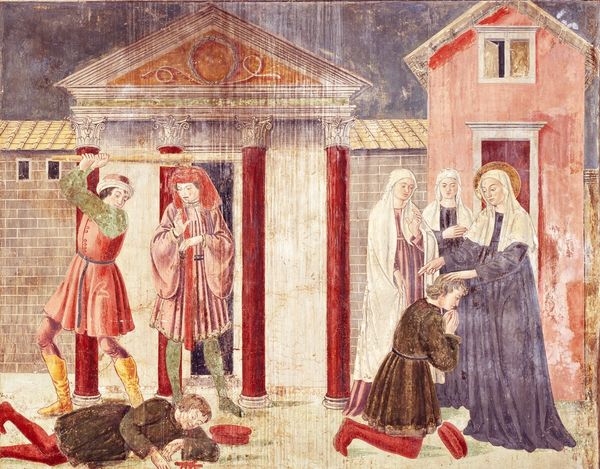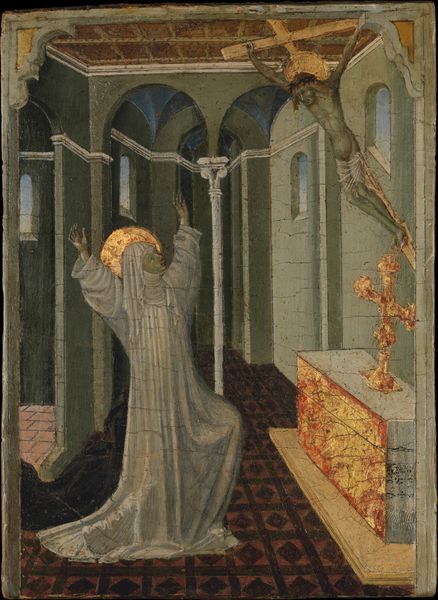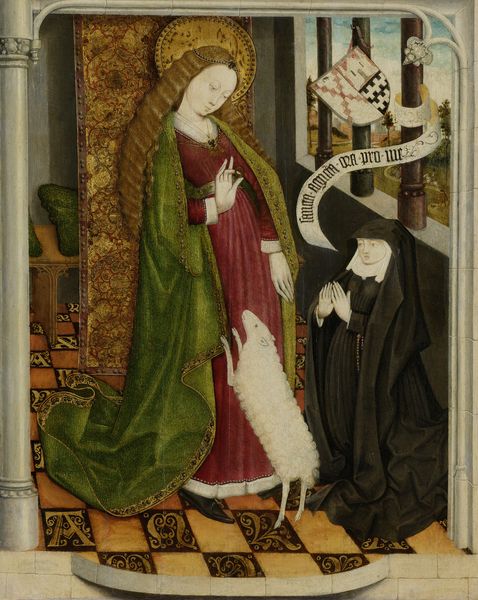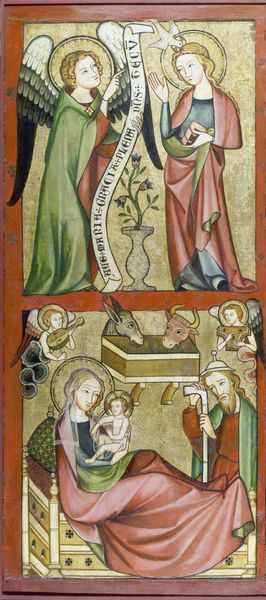
Barbara altar from the Kalanti church in Finland 1415
0:00
0:00
masterfrancke
National Museum of Finland, Helsinki, Finland
painting, oil-paint
#
medieval
#
narrative-art
#
painting
#
oil-paint
#
figuration
#
oil painting
#
history-painting
#
international-gothic
Copyright: Master Francke,Fair Use
Curator: Standing before us is a panel from the Barbara altar from the Kalanti church in Finland, an oil painting created around 1415. It’s believed to be the work of Master Francke, a prominent figure in the International Gothic style. Editor: My immediate reaction is one of stark contrast – a scene unfolding against this flat, almost ethereal gold background. There's a dramatic tension here. The colors, despite their age, still pop with such vibrancy. Curator: Indeed. Master Francke was instrumental in bringing the International Gothic style, which emphasizes elegance and rich coloration, to Northern Europe. Altarpieces like this played a crucial role in religious devotion, especially within monastic settings like Kalanti Church. They were, essentially, visual narratives of faith. Editor: And within this specific narrative, we see the stark juxtaposition of Saint Barbara, haloed and seemingly serene, confronted by the figure of what appears to be her father, holding a rather menacing sword. The patriarchal control over women's faith feels very pronounced in this scene. Curator: Absolutely. It illustrates a pivotal moment from the legend of Saint Barbara, her defiance of her father’s wishes regarding marriage and religious belief. The inclusion of the tower—a symbol often associated with her story, as she was imprisoned in one—further reinforces this narrative within a visually accessible format for the lay worshippers of the time. Editor: The tower's presence alongside the sword truly highlights the binary themes – protection versus violence, faith versus patriarchal authority. It underscores the societal forces acting upon Barbara, turning her defiance into a powerful symbol of resistance. Curator: Viewing it in its historical and socio-political context, we also see the way that hagiographies function. They are meant to simultaneously instill religious fervor, illustrate moral lessons, and of course legitimize power structures of the church, often by illustrating clear definitions of "good" and "evil." Editor: It's also crucial to acknowledge the historical silencing of women’s voices. Barbara becomes this symbol because she *resists* this patriarchal structure. It calls into question not only her father's authority, but also the role that such stories played in enforcing control within the societal structure. Curator: Looking closer, note Master Francke's rendering of textures – the detailed fabric of the father's attire against Barbara's simpler garments is interesting because it shows the difference of the roles inside of society. Editor: Reflecting on this panel, the story is much more than an isolated religious tale; it highlights gender, faith, and resistance. Barbara’s narrative still vibrates with the echoes of so many women facing similar struggles, defying expectations in pursuit of their truths. Curator: Examining it through a wider scope, we're really examining how art functions within larger structures, serving ideological ends through narrative that also gives us a look at its historical and cultural moment.
Comments
No comments
Be the first to comment and join the conversation on the ultimate creative platform.
